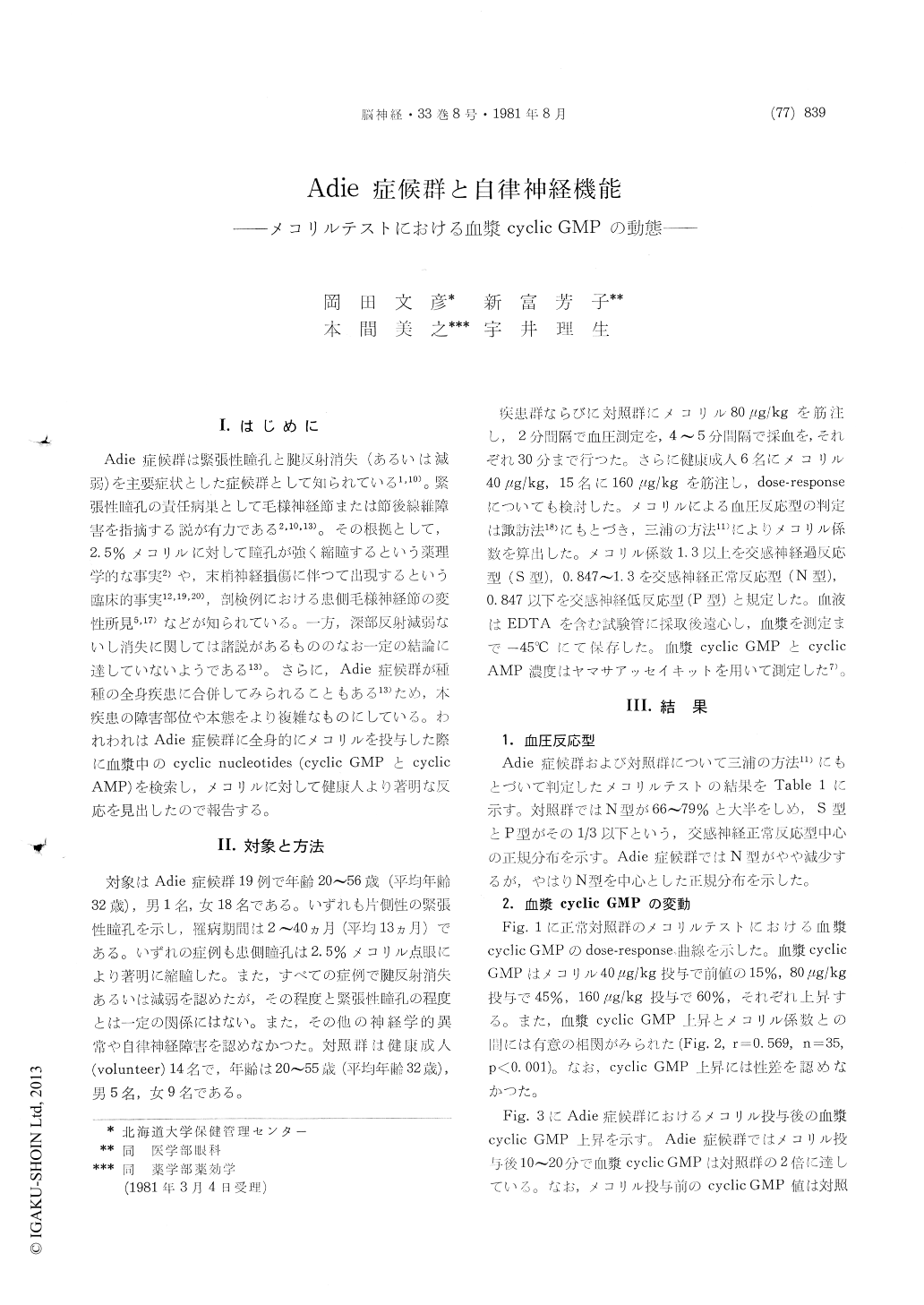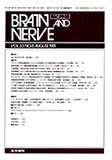Japanese
English
- 有料閲覧
- Abstract 文献概要
- 1ページ目 Look Inside
I.はじめに
Adie症候群は緊張性瞳孔と腱反射消失(あるいは減弱)を主要症状とした症候群として矢知られている1,10)。緊張性瞳孔の責任病巣として毛様神経節または節後線維障害を指摘する説が有力である2,10,13)。その根拠として,2.5%メコリルに対して瞳孔が強く縮瞳するという薬理学的な事実2)や,末梢神経損傷に伴つて出現するという臨床的事実12,19,20),剖検例における患側毛様神経節の変性所見5,17)などが知られている。一方,深部反射減弱ないし消失に関しては諸説があるもののなお一定の結論に達していないようである13)。さらに,Adie症候群が種種の全身疾患に合併してみられることもある13)ため,本疾患の障害部位や本態をより複雑なものにしている。われわれはAdie症候群に全身的にメコリルを投与した際に血漿中のcyclic nucleotides (cyclic GMPとcyclic AMP)を検索し,メコリルに対して健康人より著明な反応を見出したので報告する。
Plasma cyclic nucleotide responses to methacho-line were investigated in 19 patients with Adie's syndrome, all having the classic symptoms of pupillotonia and areflexia. The patients were 18 females and one male with an average age of 32. No medication was administered for at least one month before the studies. Control subjects were 35 volunteers who showed normal results on physi-cal or neurological investigations. For all the patients and the 14 volunteers, blood samples were obtained at 4min intervals for a period of 30 min via an indwelling intravenous cannula immediately before and after the intramuscular injection with methacholine (80μg/kg body wt.). Doses of 40μg/kg and 160μg/kg of methacholine was injected in 6 and 15 volunteers, respectively, to determine the dose-response curve of plasma cyclic GMP response induced by methacholine. Plasma cyclic nucleotides (cyclic GMP and cyclic AMP) were determined by a radioimmunoassay procedure.
The injection of methacholine caused a gradual increase in plasma cyclic GMP with a peak (15%, 45% and 60% increase of the initial in 40, 80 and 160μg/kg respectively) between 12 and 20min in the controls. A higher response of plasma cyclic GMP (a 90% increase) was observed in patients with Adie's syndrome. There was a significant positive correlation between the maximum increase in plasma cyclic GMP and the mecholyl index ex-pressing the blood pressure change on a numerical basis (controls: r=0. 569, n=35, P<0.001, Adie's syndrome: r=0.653, n=19, P<0.001). There was no significant difference in the slopes of the regres-sion lines for the two groups.
The plasma level of cyclic AMP showed no re-sponse after the injection with methacholine (80μg/kg) in controls. A 20% increase in plasma cyclic AMP was observed in patients with Adie's syndrome.
It is likely that cholinergic receptor responses are enhanced in patients with Adie's syndrome, as suggested by pupillary postganglionic denervation.

Copyright © 1981, Igaku-Shoin Ltd. All rights reserved.


